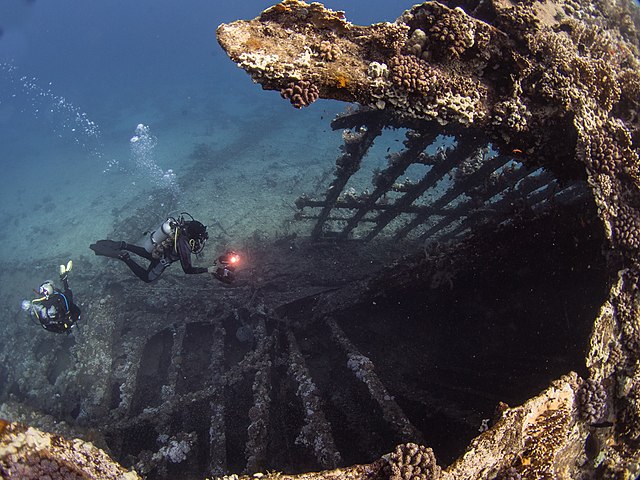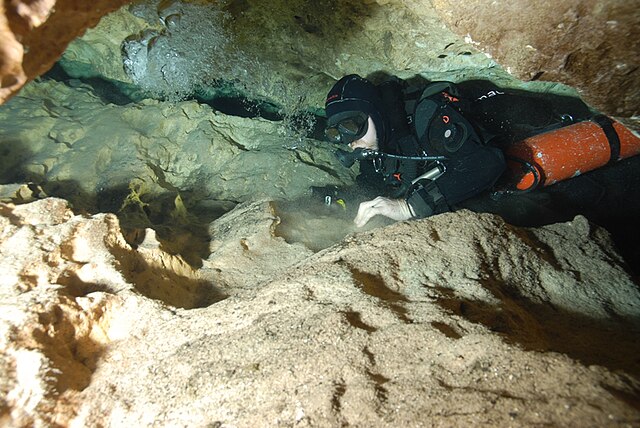An overhead or penetration diving environment is where the diver enters a space from which there is no direct, purely vertical ascent to the safety of breathable atmosphere at the surface. Cave diving, wreck diving, ice diving and diving inside or under other natural or artificial underwater structures or enclosures are examples. The restriction on direct ascent increases the risk of diving under an overhead, and this is usually addressed by adaptations of procedures and use of equipment such as redundant breathing gas sources and guide lines to indicate the route to the exit.
A cave diver running a reel with guide line into the overhead environment
Divers at the wreck of the SS Carnatic
Image: Plongée sous glace VJ
Cave-diving is underwater diving in water-filled caves. It may be done as an extreme sport, a way of exploring flooded caves for scientific investigation, or for the search for and recovery of divers or, as in the 2018 Thai cave rescue, other cave users. The equipment used varies depending on the circumstances, and ranges from breath hold to surface supplied, but almost all cave-diving is done using scuba equipment, often in specialised configurations with redundancies such as sidemount or backmounted twinset. Recreational cave-diving is generally considered to be a type of technical diving due to the lack of a free surface during large parts of the dive, and often involves planned decompression stops. A distinction is made by recreational diver training agencies between cave-diving and cavern-diving, where cavern diving is deemed to be diving in those parts of a cave where the exit to open water can be seen by natural light. An arbitrary distance limit to the open water surface may also be specified.

A cave diver running a reel with guide line into the overhead environment
Entrance to Peacock Springs Cave System
Warning sign near the entrance to a cave
Sidemount diver in a fairly tight space






